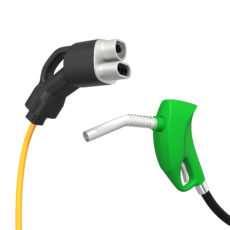
When talking about the Energy Footprint (EF) of a product, we mean the total energy that was consumed throughout the life of that product. This will include all types of energy from fossil fuels to renewable energy, which can be compared across a range of goods and services.
To start a calculation of the energy footprint, we look at the structure of the product lifetime. What materials make up the product. How they are put together. Where has this occurred. The transportation network of the goods to the consumer. Use and disposal of the product. These factors and more combine to provide the EF.
The energy for resources and minerals is calculated by looking at the total energy used in extraction and energy costs associated with transportation. This is applied to farming, through energy used to supply grain, water or fertilizer.
The energy coupled to manufacturing of goods is a complex system due to an increase in variables. Components can be made in a number of different factories before being transported to a central location for assembly. Multiple goods can be manufactured at the one location. Breaking down this entire structure is required to compare the EF of goods manufactured under different circumstances.
Harvested fresh produce and livestock often have extra requirements to transport them that will increase the EF. Refrigeration can run off the power of the transport but will add load and increase the required energy.
We also discuss energy saving opportunities associated with online shopping over store-front retailers, but not all advantages are available subject to the geographic location.
Depending on the type of product there may be energy requirements used in the operation, preparation or consumption. Some products require periodical maintenance (car) or power changes (battery in a toy), some perishables have storage requirements (refrigeration) or preparation (cooking) that are to be considered.
All products will have energy consumed from disposal added to their EF. Whether it goes to landfill, recycled or simply used in compost, we can calculate this no matter how small it becomes (don’t forget the energy required to fill up the cistern not to mention further down the line).
Another often overlooked energy factor is from services. Consider assistance received from an IT help desk. There is the energy used from recruiting and training personnel or the energy used during the call. This will be a small amount in comparison to your overall daily EF but should be optimized by the provider of the service.
Once your Energy Footprint has been established, there can be further investigation into overall reduction or transitioning to contain a higher percentage of renewable energy. There are significant energy savings to be made without necessarily adjusting spending habits. Small changes away from consuming heavily energy dependent products or services will make significant reduction in consumers daily EF.
Taking the information provided and making an informed decision is the best start to modernizing our approach to reducing the energy footprint.


